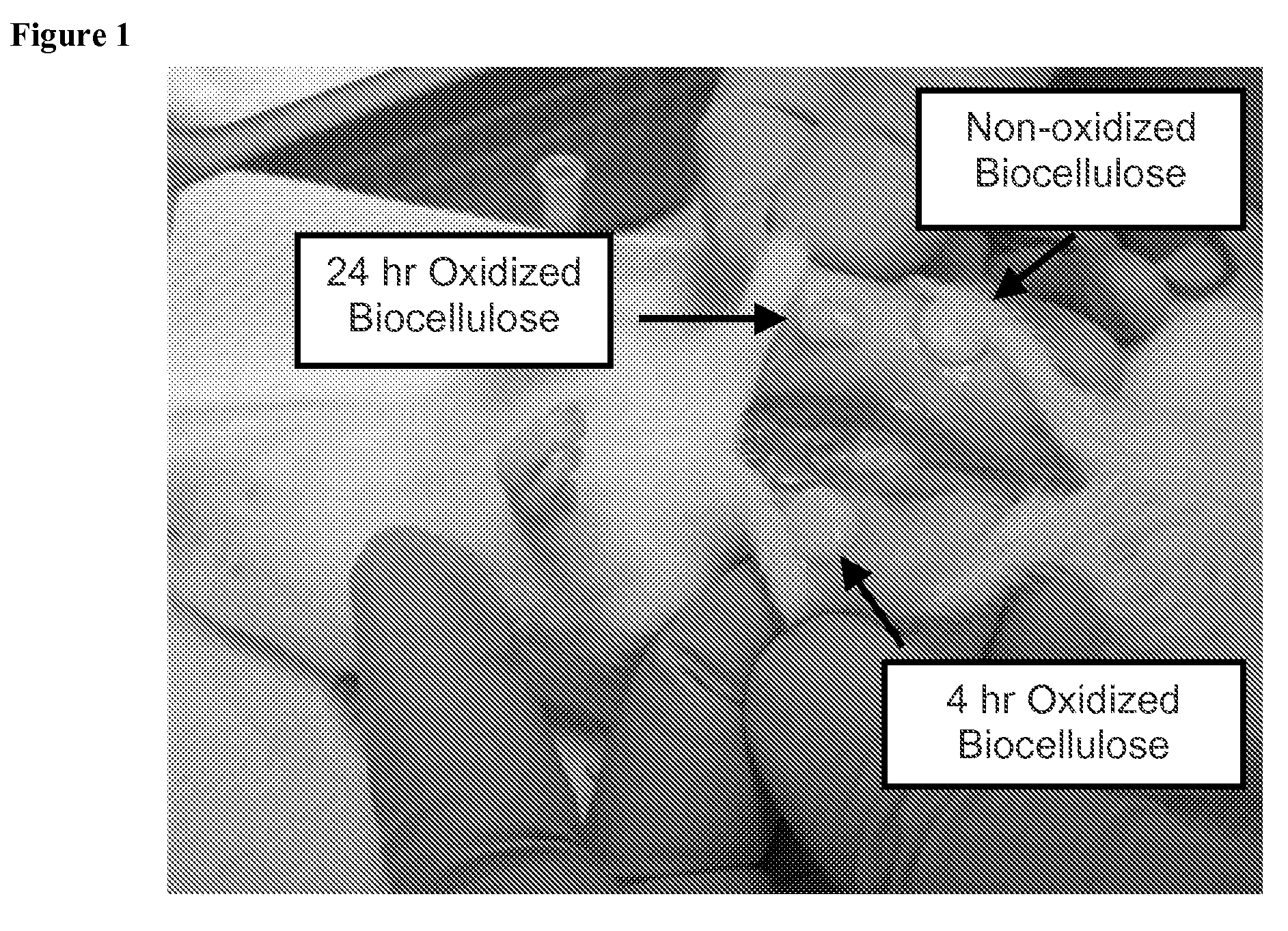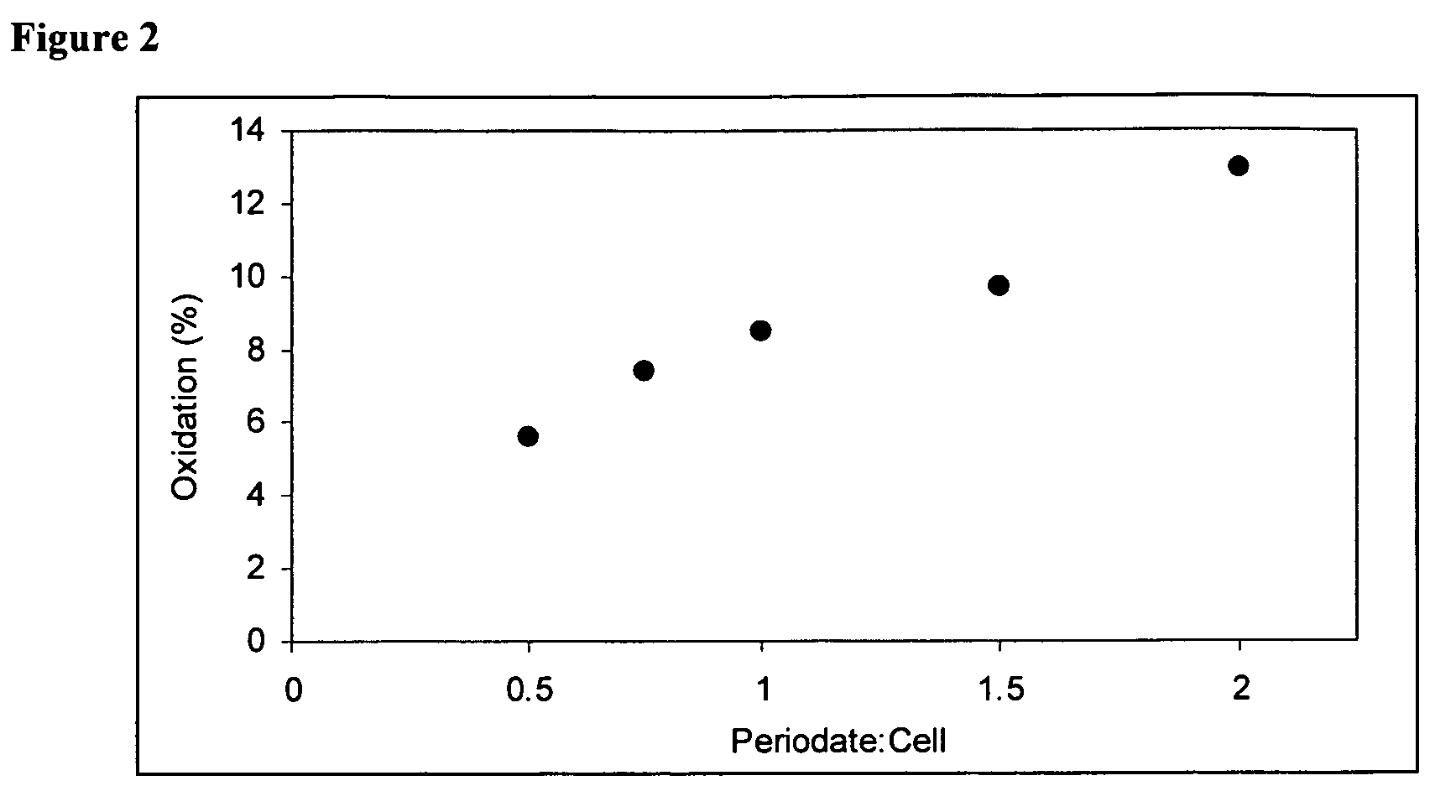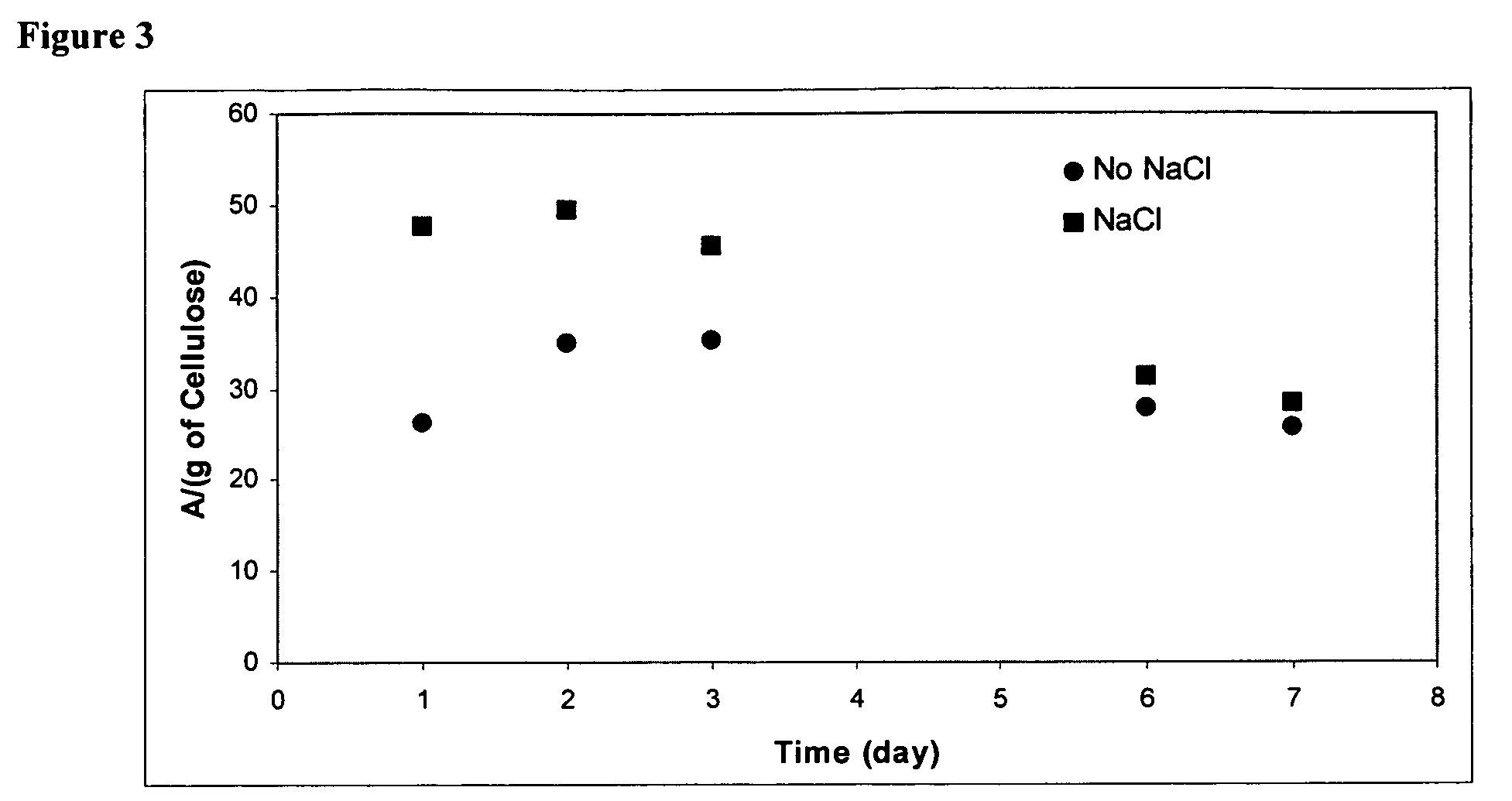Oxidized microbial cellulose and use thereof
a technology of microbial cellulose and cellulose, which is applied in the field of oxidized polysaccharide materials, can solve the problems of not being able to report commercially available oxidized cellulose medical devices created by other means, not being able to describe and specifically discourage the use of cellulose from microbial sources
- Summary
- Abstract
- Description
- Claims
- Application Information
AI Technical Summary
Benefits of technology
Problems solved by technology
Method used
Image
Examples
example 1
Production of Microbial Cellulose by Acetobacter xylinum
[0041]This example describes the production of microbial cellulose by Acetobacter xylinum suitable for use in preparing oxidized cellulose.
[0042]Sterilized media was inoculated with A. xylinum from a propagation vessel prior to incubation. The media is based on a modified Schramm-Hestrin medium formulation as described in U.S. Ser. No. 10 / 132,171,. The inoculated media was used to fill bioreactor trays to a fixed volume, including, 50, 110, 220, 330, 360, and 440 g. These trays were covered with plastic sheeting and aeration ports are added for oxygen exposure during growth. Trays were then incubated under static conditions at a fixed temperature of 30° C. until optimal growth was achieved (4 days for 50 g to 21 days for 440 g).
example 2
Processing of Microbial Cellulose
[0043]Microbial cellulose harvested from A. xylinum was chemically treated to remove bacterial by-products and residual media. But prior to chemical processing, the pellicles were first pressed with a pneumatic press to remove excess media.
[0044]The pressed cellulose pellicles were then chemically processed. The process entailed a dynamic soak in a 75° C. heated tank of 2-8% caustic solution containing sodium hydroxide for approximately one hour to depyrogenate. This chemical process was followed by a continuous rinse with filtered water to remove the caustic solution from the processed pellicles. Following the rinse, the pellicles were treated with 0.25% hydrogen peroxide at 40° C. for one hour to obtain a “whitened” appearance. Following chemical processing, the microbial cellulose films were again subject to a dehydration press in a pneumatic press to achieve the desired cellulose content and then subject to various post-chemical processing techni...
example 3
Oxidation of Microbial Cellulose
[0045]Chemically processed cellulose pellicles were oxidized. The cellulose samples were placed in a 0.1M NaIO4 solution for either 4 or 24 hours at 40° C. Incubation was conducted in a closed reaction vessel within a darkened incubator to prevent side reactions of the cellulose. Following oxidation, the samples were rinsed to remove residual NaIO4, punched to the desired size, packaged and sterilized using gamma irradiation for implantation.
PUM
| Property | Measurement | Unit |
|---|---|---|
| temperature | aaaaa | aaaaa |
| temperature | aaaaa | aaaaa |
| temperature | aaaaa | aaaaa |
Abstract
Description
Claims
Application Information
 Login to View More
Login to View More - R&D
- Intellectual Property
- Life Sciences
- Materials
- Tech Scout
- Unparalleled Data Quality
- Higher Quality Content
- 60% Fewer Hallucinations
Browse by: Latest US Patents, China's latest patents, Technical Efficacy Thesaurus, Application Domain, Technology Topic, Popular Technical Reports.
© 2025 PatSnap. All rights reserved.Legal|Privacy policy|Modern Slavery Act Transparency Statement|Sitemap|About US| Contact US: help@patsnap.com



